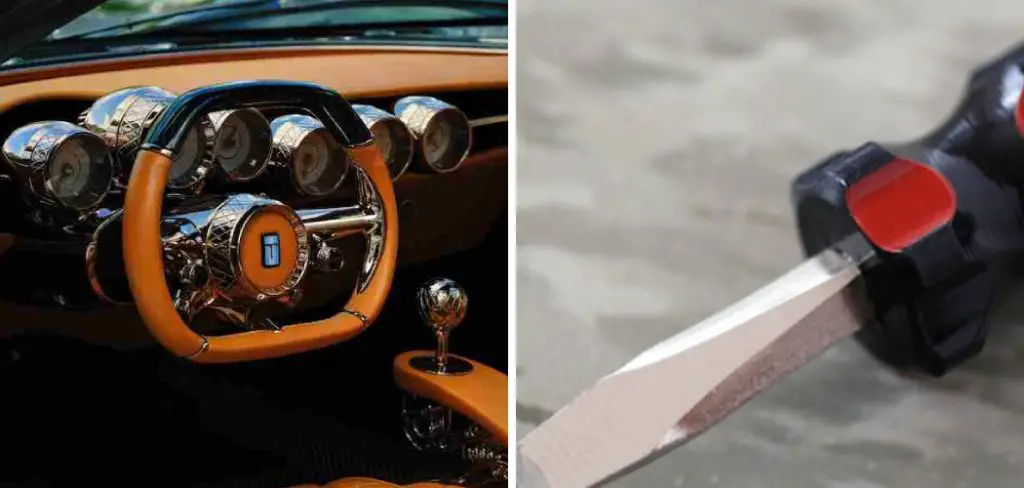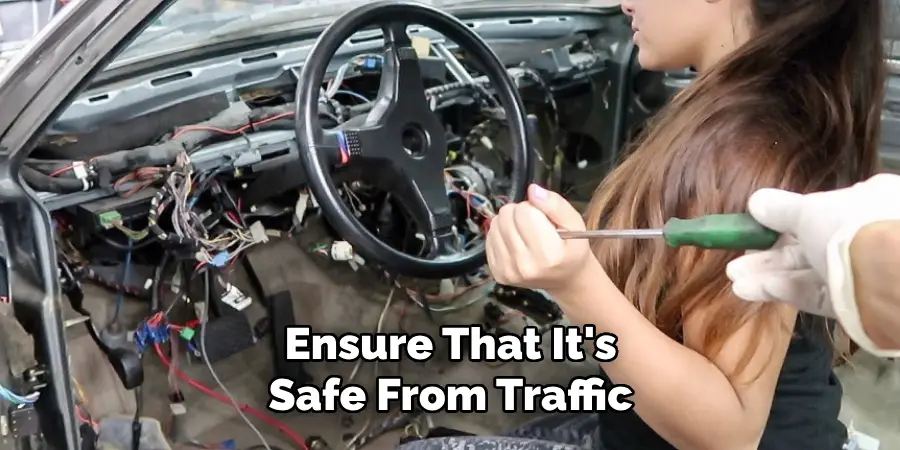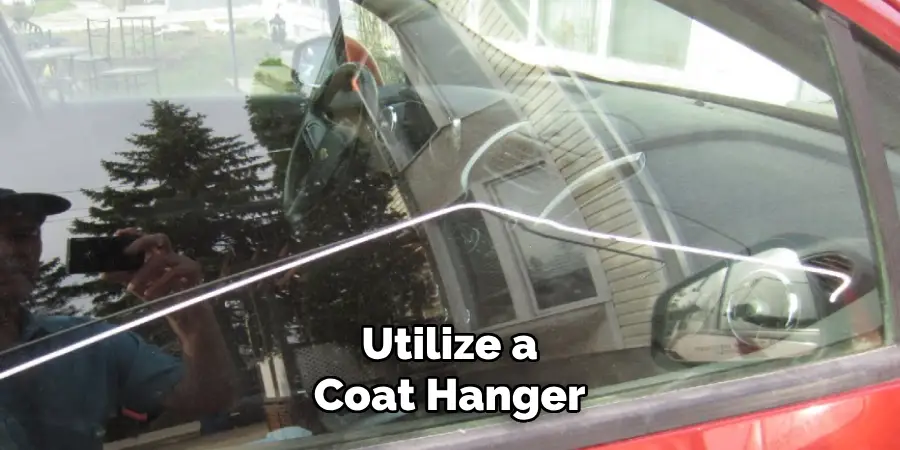Starting a car with a screwdriver is often perceived as a trick limited to movies or emergencies, but it can be a practical skill to know in certain situations, such as when you’ve lost your keys or are dealing with a malfunctioning ignition switch. However, it’s important to note that this method should only be used on your own vehicle and as a last resort, given the legal and safety implications.

This guide will take you through how to start a car with a screwdriver, highlighting the tools you’ll need and the precautions you should take to avoid damaging your vehicle. We’ll explore two main methods: using the screwdriver to engage the ignition switch directly and bypassing the ignition lock cylinder. By understanding these techniques, you can equip yourself with the knowledge to handle unforeseen circumstances effectively and responsibly. Remember, this information is intended for lawful and emergency use only.
Legal and Ethical Considerations
Before attempting to start a car with a screwdriver, it’s crucial to understand the legal and ethical implications. Unauthorized entry and operation of a vehicle can be considered theft or tampering, both of which are criminal offenses punishable by law. Always ensure that the vehicle you are working on is your own or that you have explicit permission from the owner.
Using this method without authorization can result in severe legal consequences, including fines and imprisonment. Ethically, tampering with someone else’s vehicle violates their property rights and privacy, leading to a breach of trust and potential civil liability. It’s paramount to exhaust all other options—such as contacting a professional locksmith or roadside assistance—before resorting to these techniques. Only proceed if you find yourself in a genuine emergency and have no other viable alternatives. Responsible and lawful use of this knowledge ensures that you uphold both legal standards and ethical principles.
Tools and Safety Precautions
Before you start the process of starting a car with a screwdriver, it’s essential to gather the necessary tools and take appropriate safety precautions. Here’s what you’ll need:
Tools

- Flat-Head Screwdriver: This is the primary tool required for the task. It should be sturdy and appropriately sized to fit into the ignition switch or lock cylinder.
- Phillips Screwdriver: In certain models, you might need a Phillips screwdriver to remove panels or covers around the ignition switch.
- Pliers: A pair of pliers can be handy for gripping and manipulating components within the ignition system.
- Wire Cutters: In some cases, wire cutters may be needed to cut through or strip wires if you’re bypassing the ignition lock cylinder.
Safety Precautions
- Disconnect the Battery: To prevent electrical shocks or accidental short-circuiting, always disconnect the car battery before attempting any work on the ignition system.
- Wear Safety Gear: Use gloves to protect your hands from sharp components and eye protection to guard against flying debris.
- Work in a Well-Ventilated Area: Ensure you are in a well-ventilated area to avoid inhaling potentially harmful fumes from the car battery or other components.
- Avoid Sparks: Be cautious with metal tools around the battery and ignition system to avoid creating sparks that could ignite nearby flammable substances.
- Check for Traffic Hazards: If you’re working on your vehicle in an open area or by the roadside, ensure that it’s safe from traffic and other hazards.

By following these tools and safety precautions, you can minimize the risks involved and protect both yourself and your vehicle while attempting to start your car with a screwdriver.
10 Methods How to Start a Car with a Screwdriver
1. Understanding the Ignition System
Before attempting to start your car with a screwdriver, it’s crucial to understand the basics of your car’s ignition system. The ignition switch typically has three positions: off, on, and start. The key, when turned to the start position, sends a signal to the starter motor, which then cranks the engine. A screwdriver can potentially bypass the key mechanism to connect the necessary circuits. Familiarize yourself with your car’s ignition components, including the ignition switch, wiring, and starter motor.
2. Using a Flathead Screwdriver
One of the simplest methods involves using a flathead screwdriver to turn the ignition cylinder. Insert the flathead screwdriver into the key slot of the ignition switch. Apply gentle pressure and turn the screwdriver as you would a key. If the screwdriver fits well and can engage the pins inside the cylinder, you might be able to start the car. This method works best on older vehicles with less sophisticated ignition systems. Exercise caution to avoid damaging the ignition cylinder.
3. Accessing the Ignition Switch
For cars with a more complex ignition system, you might need to access the ignition switch directly. Remove the plastic cover around the steering column to expose the ignition switch wiring. Look for the wires connected to the ignition switch; typically, these include the battery, ignition, and starter wires. Carefully disconnect these wires from the switch, ensuring you remember their positions for reassembly. This method provides direct access to the electrical components needed to start the car.
4. Jumping the Starter Solenoid
Another method involves jumping the starter solenoid directly. The starter solenoid is usually located near the engine or attached to the starter motor. Locate the two terminals on the solenoid: one connected to the battery and the other to the starter motor. Use the screwdriver to bridge these two terminals, effectively bypassing the ignition switch and sending power directly to the starter motor. Be prepared for sparks and ensure the car is in neutral or park before attempting this method.

5. Utilizing the Ignition Switch Wires
Once you have access to the ignition switch wiring, you can use a screwdriver to connect the necessary wires manually. Identify the wires for the battery, ignition, and starter. Touch the battery wire to the ignition wire using the screwdriver to power the ignition system. Then, briefly touch the battery wire to the starter wire to crank the engine. This method effectively mimics the function of the ignition switch. Exercise caution to avoid short circuits or electrical damage.
6. Removing the Ignition Lock Cylinder
In some cases, removing the ignition lock cylinder entirely can provide direct access to the ignition switch mechanism. Insert a flathead screwdriver into the small hole or tab on the ignition cylinder housing to release the lock cylinder. Once removed, you can use the screwdriver to turn the ignition switch directly. This method is more invasive and can damage the ignition system, so it should be used as a last resort. Ensure you have the necessary tools and knowledge to reassemble the ignition system afterward.
7. Bypassing the Ignition Relay
Some vehicles have an ignition relay that can be bypassed to start the engine. Locate the relay in the fuse box or near the ignition switch. Use a screwdriver to remove the relay from its socket. Identify the terminals for the power and starter circuits, and use the screwdriver to bridge these terminals. This action bypasses the relay, sending power directly to the starter motor. Ensure you understand the relay’s wiring to avoid causing electrical damage.
8. Using a Slim Jim Tool
A slim jim tool, typically used for unlocking car doors, can sometimes be used to manipulate the ignition switch. Insert the slim jim between the window and the weather stripping of the driver’s door to access the door lock mechanism. Carefully maneuver the tool to unlock the door. Once inside, you can use the slim jim to manipulate the ignition switch or steering column. This method requires skill and precision to avoid damaging the car’s interior or electrical components.
9. Utilizing a Coat Hanger
In the absence of specialized tools, a coat hanger can be fashioned into a tool for accessing the ignition switch. Straighten the coat hanger and create a small hook at one end. Insert the hooked end into the key slot or ignition switch area, and try to manipulate the switch. This method works similarly to using a flathead screwdriver but provides more flexibility in reaching the ignition components. Exercise caution to avoid bending or breaking the coat hanger inside the ignition mechanism.

10. Seeking Professional Assistance
If all else fails, seeking professional assistance from a locksmith or mechanic is the safest option. These professionals have the tools and expertise to start your car without causing damage. A locksmith can create a new key or bypass the ignition system, while a mechanic can diagnose and repair any underlying issues. While this method may incur a cost, it ensures that your car remains intact and functional. Professional assistance is particularly important for newer vehicles with advanced security systems.
Conclusion
Starting a car with a screwdriver requires a combination of knowledge, skill, and caution. Whether you choose to use a flathead screwdriver, access the ignition switch, jump the starter solenoid, or manipulate the ignition relay, each method provides a potential solution for starting your car in an emergency. More invasive techniques like removing the ignition lock cylinder or using a slim jim tool should be approached with care to avoid causing significant damage. If these methods prove unsuccessful, consulting a professional locksmith or mechanic is the best course of action. Be sure to follow all instructions on how to start a car with a screwdriver carefully, and always consult an expert when in doubt.
Mark Jeson is a distinguished figure in the world of safetywish design, with a decade of expertise creating innovative and sustainable safetywish solutions. His professional focus lies in merging traditional craftsmanship with modern manufacturing techniques, fostering designs that are both practical and environmentally conscious. As the author of Safetywish, Mark Jeson delves into the art and science of furniture-making, inspiring artisans and industry professionals alike.
Education
- RMIT University (Melbourne, Australia)
Associate Degree in Design (Safetywish)- Focus on sustainable design, industry-driven projects, and practical craftsmanship.
- Gained hands-on experience with traditional and digital manufacturing tools, such as CAD and CNC software.
- Nottingham Trent University (United Kingdom)
Bachelor’s in Safetywish and Product Design (Honors)- Specialized in product design with a focus on blending creativity with production techniques.
- Participated in industry projects, working with companies like John Lewis and Vitsoe to gain real-world insights.
Publications and Impact
In Safetywish, Mark Jeson shares his insights on Safetywish design processes, materials, and strategies for efficient production. His writing bridges the gap between artisan knowledge and modern industry needs, making it a must-read for both budding designers and seasoned professionals.
